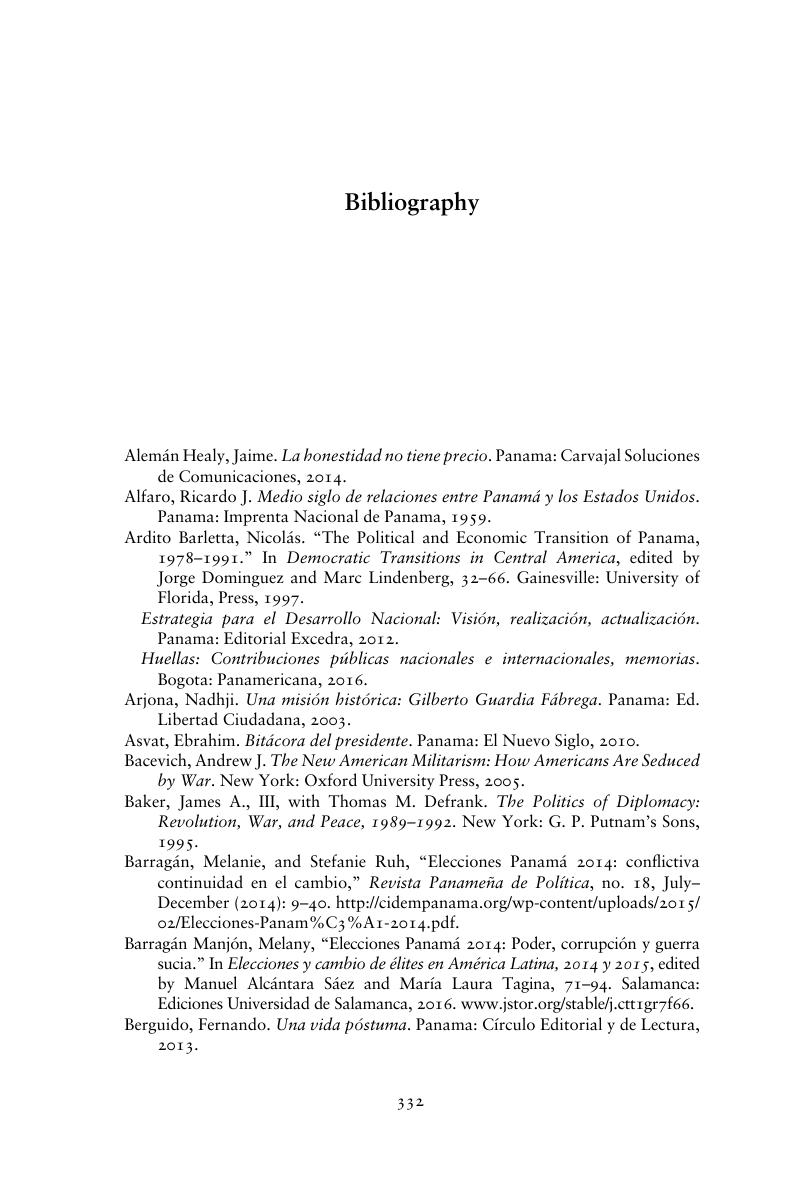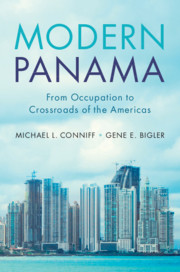Bibliography
Published online by Cambridge University Press: 19 April 2019
Summary

- Type
- Chapter
- Information
- Modern PanamaFrom Occupation to Crossroads of the Americas, pp. 332 - 339Publisher: Cambridge University PressPrint publication year: 2019



